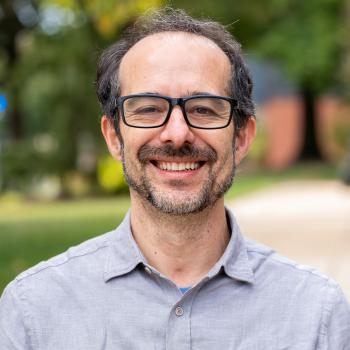
Massimo Ricotti
Professor
Latest Papers
VENUS: A Strongly Lensed Clumpy Galaxy at $z\sim11-12$ behind the Galaxy Cluster MACS J0257.1-2325
|
arXiv e-prints
Author(s): Nakane, Minami, Kokorev, Vasily, Fujimoto, Seiji, et. al
UMD Author(s): Massimo Ricotti
JWSTs PEARLS: NIRCam imaging and NIRISS spectroscopy of a z = 3.6 star-forming galaxy lensed into a near-Einstein ring by a z = 1.258 massive elliptical galaxy
|
Monthly Notices of the Royal Astronomical Society
Author(s): Adams, Nathan J., Ferrami, Giovanni, Westcott, Lewi, et. al
UMD Author(s): Massimo Ricotti
The Distribution of Quenched Galaxies in the Massive z = 0.87 Galaxy Cluster El Gordo
|
arXiv e-prints
Author(s): Honor, Rachel, Cohen, Seth, Carleton, Timothy, et. al
UMD Author(s): Massimo Ricotti
PEARLS: Globular Clusters and Ultracompact Dwarfs in the El Gordo Galaxies at z = 0.87
|
The Astrophysical Journal
Author(s): Harris, William E., Reina-Campos, Marta, Koekemoer, Anton M., et. al
UMD Author(s): Massimo Ricotti
Self-consistent JWST Census of Star Formation and AGN Activity at z = 5.5─13.5
|
The Astrophysical Journal
Author(s): D'Silva, Jordan C. J., Driver, Simon P., Lagos, Claudia D. P., et. al
UMD Author(s): Massimo Ricotti
Globular Clusters in the Galaxy Cluster MACS0416 at z = 0.397
|
arXiv e-prints
Author(s): Berkheimer, Jessica M., Windhorst, Rogier A., Harris, William E., et. al
UMD Author(s): Massimo Ricotti
The z = 9.625 Cosmic Gems Galaxy was a "Compact Blue Monster" Propelled by Massive Star Clusters
|
arXiv e-prints
Author(s): Vanzella, E., Messa, M., Adamo, A., et. al
UMD Author(s): Massimo Ricotti
Dissecting Reionisation with the Cosmic Star Formation and AGN Luminosity History
|
arXiv e-prints
Author(s): D'Silva, Jordan C. J., Driver, Simon P., Lagos, Claudia D. P., et. al
UMD Author(s): Massimo Ricotti
JWST spectroscopic confirmation of the Cosmic Gems arc at z=9.625 -- Insights into the small scale structure of a post-burst system
|
arXiv e-prints
Author(s): Messa, M., Vanzella, E., Loiacono, F., et. al
UMD Author(s): Massimo Ricotti
JWST's PEARLS: A Candidate Massive Binary Star System in a Lensed Galaxy at Redshift 0.94
|
arXiv e-prints
Author(s): Williams, Hayley, Kelly, Patrick L., Zapartas, Emmanouil, et. al
UMD Author(s): Massimo Ricotti

